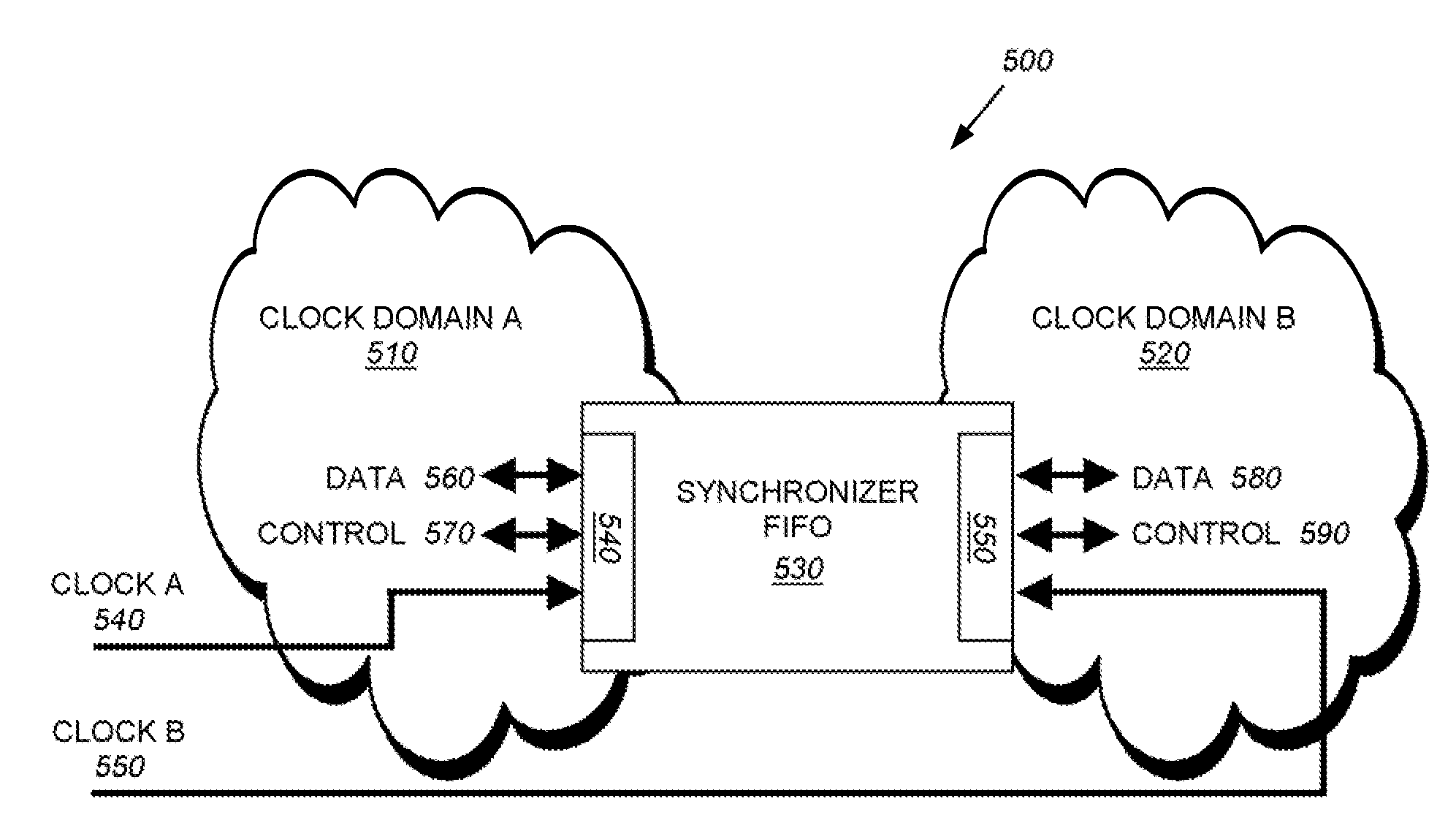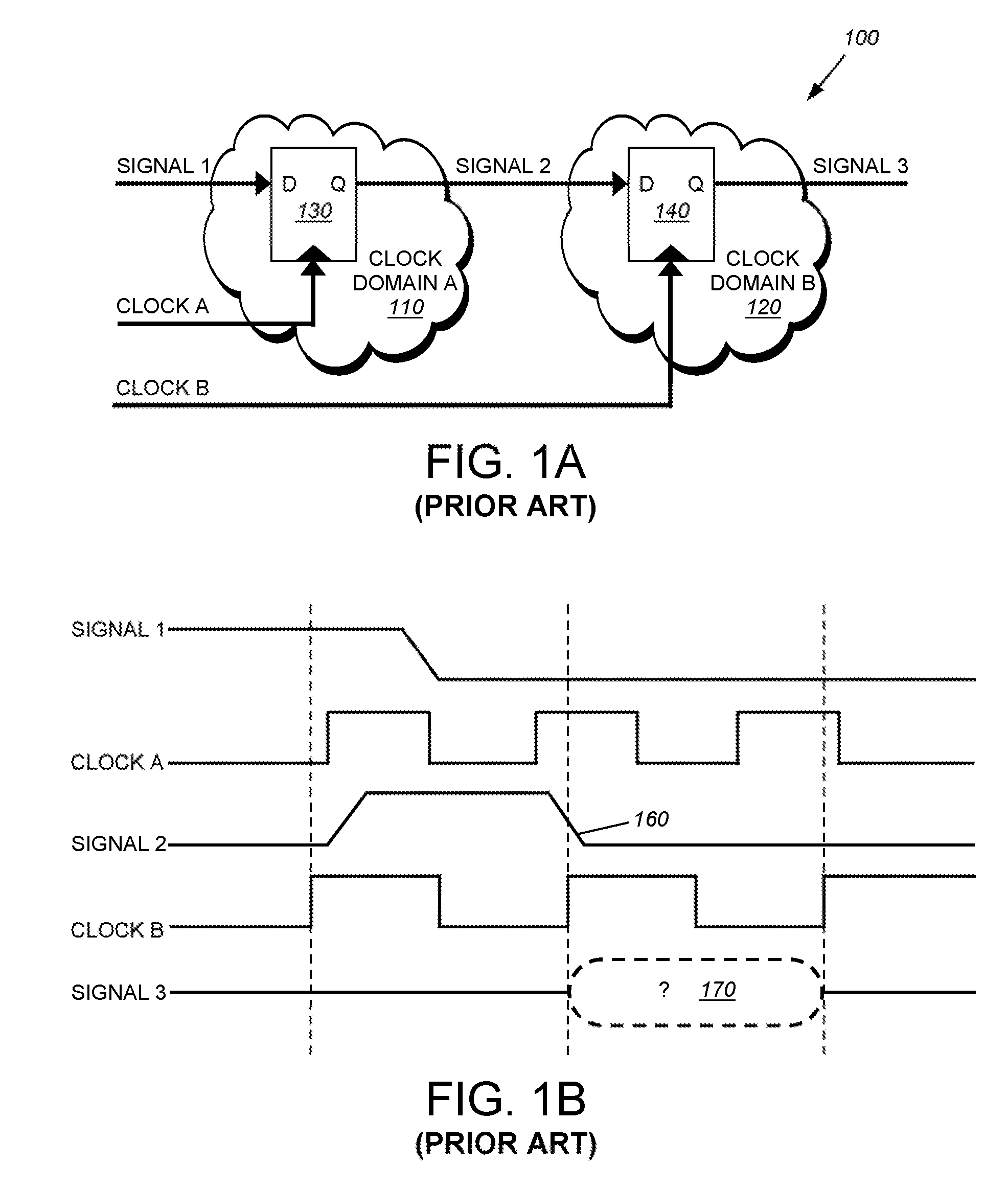System and method for designing multiple clock domain circuits
a design method and clock domain technology, applied in the direction of cad circuit design, program control, instruments, etc., can solve the problems of increasing the complexity of digital circuits, and increasing the limitations of both rtl and behavioral circuit specification techniques, so as to simplify the handling of clocks
- Summary
- Abstract
- Description
- Claims
- Application Information
AI Technical Summary
Benefits of technology
Problems solved by technology
Method used
Image
Examples
Embodiment Construction
[0040]FIG. 4 is a flow diagram 400 that illustrates the synthesis of a TRS circuit specification 410 into a physical hardware device 470. The TRS circuit specification 410 is specified using a plurality of TRS rules that each have a predicate and an action body, and thus may be written in the general form:[0041]π(s)=>s:=δ(s)
where it is the predicate and s:=δ(s) is the action body. Function δ is used to compute the next state of the system from the current state s. The system functions by selecting a rule whose predicate is true, and then atomically (without interaction with other rules) executing the rule's action body. The selecting and executing of rules continues as long as some rule's predicate is true.
[0042]Such a system is suited for design and verification of complex digital systems as explained in Arvind and X. Shen, “Using Term Rewriting Systems to Design and Verify Processors,” MIT LCS Memo CSG-419, IEEE Micro, May / June 1999; Mithal et al., Digital Circuit Synthesis System...
PUM
 Login to View More
Login to View More Abstract
Description
Claims
Application Information
 Login to View More
Login to View More - R&D
- Intellectual Property
- Life Sciences
- Materials
- Tech Scout
- Unparalleled Data Quality
- Higher Quality Content
- 60% Fewer Hallucinations
Browse by: Latest US Patents, China's latest patents, Technical Efficacy Thesaurus, Application Domain, Technology Topic, Popular Technical Reports.
© 2025 PatSnap. All rights reserved.Legal|Privacy policy|Modern Slavery Act Transparency Statement|Sitemap|About US| Contact US: help@patsnap.com



